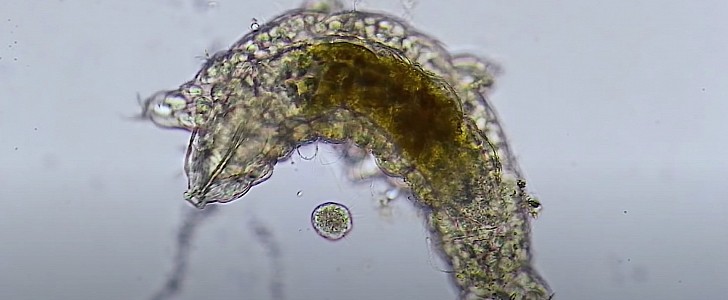Tardigrades are nasty little creatures. They’re tiny and widespread enough to easily fuel the nightmares of people who dread the knowledge of nearly-microscopic creatures with claws, suction disks and knife-like teeth being all around them.
As far as we know, despite their hideous look and menacing weaponry, tardigrades do not eat people, because they simply can’t. If anything, we’re pretty sure it’s the other way around, and most of us have probably unknowingly eaten loads of tardigrades as the damn things are literally everywhere.
And by everywhere, we mean not only on this planet. The last extra-terrestrial tardigrade adventure that we know of involves the Israeli Beresheet spacecraft, which crashed on the moon carrying a bunch of these little beasts.
It is exactly this ability of theirs to survive literally everywhere that has caught the attention of yet another group of scientists. A group that wanted to see if these creatures can survive being shot out of a gun.
The goal of the experiment was to officially investigate the “ability of tardigrades to survive impact shocks in the kilometer per second and gigapascal range.” That was needed as a means to prove whether the panspermia theory of life spreading through the universe has some merits.
According to a paper published earlier this May, tardigrades, “handled according to the ethical rules for invertebrates with the consent of the departmental ethics officer,” were shot in a frozen state out of a two-stage light gas gun at sand targets in a vacuum chamber.
Scientists fired six shots at speeds between 0.556 to 1 km per second (1,243 to 2,237 mph) and found that these creatures can survive low-to moderate-speed impacts (0.728 km per second/1,628 mph), but do not withstand 0.901 km per second (2,015 mph) impacts.
The team says the statistics of these findings are still low, and “future experiments with larger numbers would be beneficial,” so expect more tardigrades to be fired from guns in the near future. Probably also with consent of the departmental ethics officer.
And by everywhere, we mean not only on this planet. The last extra-terrestrial tardigrade adventure that we know of involves the Israeli Beresheet spacecraft, which crashed on the moon carrying a bunch of these little beasts.
It is exactly this ability of theirs to survive literally everywhere that has caught the attention of yet another group of scientists. A group that wanted to see if these creatures can survive being shot out of a gun.
The goal of the experiment was to officially investigate the “ability of tardigrades to survive impact shocks in the kilometer per second and gigapascal range.” That was needed as a means to prove whether the panspermia theory of life spreading through the universe has some merits.
According to a paper published earlier this May, tardigrades, “handled according to the ethical rules for invertebrates with the consent of the departmental ethics officer,” were shot in a frozen state out of a two-stage light gas gun at sand targets in a vacuum chamber.
Scientists fired six shots at speeds between 0.556 to 1 km per second (1,243 to 2,237 mph) and found that these creatures can survive low-to moderate-speed impacts (0.728 km per second/1,628 mph), but do not withstand 0.901 km per second (2,015 mph) impacts.
The team says the statistics of these findings are still low, and “future experiments with larger numbers would be beneficial,” so expect more tardigrades to be fired from guns in the near future. Probably also with consent of the departmental ethics officer.


